
IMG_0962 - Modern tributes to the victims. They did not escape because hot, odorless, carbon monoxide came first.
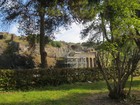
IMG_0964 - Excavations started in 1748 and restorations are still going on.

IMG_0965 - The gladiators' school and barracks. Their names were by their room doors. One was Proctus Africanus .
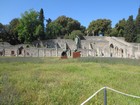
IMG_0966 - It was usual to add one's origin to one's name, but they also fought for the honour of their home country.
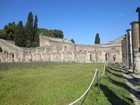
IMG_0967 - The amphitheatre next door, where they practiced and performed, held an estimated 20,000 spectators.
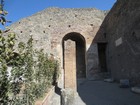
IMG_0968 - An original archway.
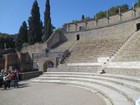
IMG_0969 - The amphitheatre was formerly a Greek theatre that the Romans modified for combat games.
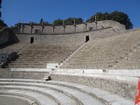
IMG_0970 - Ropes attached to the masts at the top supported "valeria", linen-sheet sunshades.
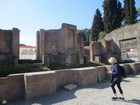
IMG_0971 - Structures survived the eruption because, though the heat burned the roofs, the pumice stones were small.

IMG_0972 - In addition to an aqueduct from 40 km away, rainwater was collected.
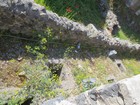
IMG_0973 - The collected rainwater was stored in underground cisterns.
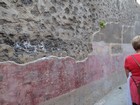
IMG_0975 - The deep ash and pebbles protected the city from weathering and disturbance from AD 79 to 1823.